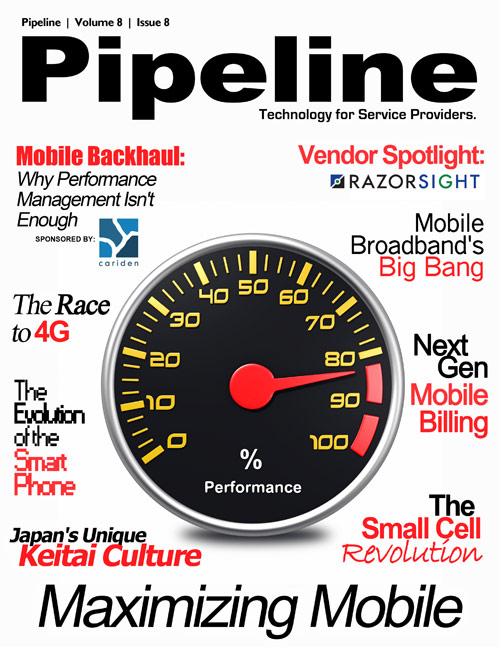Correlated to the ForHealth initiative, the company's Emerging Devices Organization has been making forays into health-related wireless devices. David Haight, Emerging Devices VP of Business Development, said, "We're constantly looking for viable applications in Healthcare so that we can wirelessly enable innovative connected devices. Whether it's wireless sensors embedded in clothing to monitor people's vital signs or a prescription bottle sending you reminders to take a pill, it's clear that mHealth solutions have significant potential to increase access, decrease costs and improve outcomes in healthcare."
AT&T, through the Emerging Devices unit, has cinched deals to provide wireless connectivity for Nantworks' Vitality GlowCaps—a wireless pill bottle top which reminds you to take your daily meds—and BlueLibris. At the beginning of November, we heard AT&T was working with Zephyr Technology on a monitoring device which snaps on and off of a shirt. The module tracks the wearer's vital signs and uploads them to a web portal. Just last week, we reported that AT&T is teaming up with Virginia bioengineering company Exmovere to wirelessly enable baby pajamas that monitor and transmit vital signs in infants. Real-time data and alerts give this product a tangible edge over traditional radio nursery monitors which is good, because ever since I watched "The Baby's Room," those things have creeped me out to no end.
AT&T's Boulevard of Broken Deals
On a separate front, AT&T has officially conceded defeat in its abortive acquisition of T-Mobile. The process, initiated back in March, derailed at the end of August with the DoJ's suit to block the merger and is now dead in the water. AT&T's Dec. 19 announcement emphasized the proposed deal's worth as an "interim solution" to a consumer spectrum shortage as opposed to a means of supplanting Verizon for the number one wireless spot. Randall Stephenson, AT&T's chairman and CEO stated:


"To meet the needs of our customers, we will continue to invest. However, adding capacity to meet these needs will require policymakers to do two things. First, in the near term, they should allow the free markets to work so that additional spectrum is available to meet the immediate needs of the U.S. wireless industry... Second, policymakers should enact legislation to meet our nation's longer-term spectrum needs… The mobile Internet is a dynamic industry that can be a critical driver in restoring American economic growth and job creation, but only if companies are allowed to react quickly to customer needs and market forces."
Under the terms of the deal, AT&T will have to pay T-Mobile parent Deutsche Telekom over $3 billion in breakup fees, and about $1 billion in wireless rights. The two companies will enter into a roaming agreement for a reported seven years.
Five days ahead of this announcement—less than two weeks before Christmas—AT&T had laid-off 100 of its customer information specialists in Connecticut, in a move the company says owes to America's continued shift from POTS to wireless. AT&T cited a 54 percent decrease in operator-handled calls over the last three years. According to the company, despite the wireline layoffs, it is still hiring in other areas of its business, like U-Verse and retail stores.
In an otherwise gloomy Christmas for AT&T, there was a silver lining to go with their silver bells. On Dec. 22, the FCC approved AT&T's proposed $1.9 billion purchase of San Diego-based Qualcomm's 700 MHz spectrum licenses. AT&T will receive 6 MHz across the country, as well as an additional 6 MHz in New York, Boston, Philadelphia, Los Angeles and San Francisco. Those five major markets represent some 70 million potential customers for AT&T.
AT&T is not the only one to have raised red antitrust flags. The DoJ is reportedly looking into Verizon's spectrum deals with SpectrumCo—a joint between Comcast, TWC and Bright House—and Cox. Those two agreements, signed in December, amount to almost $4 billion.








